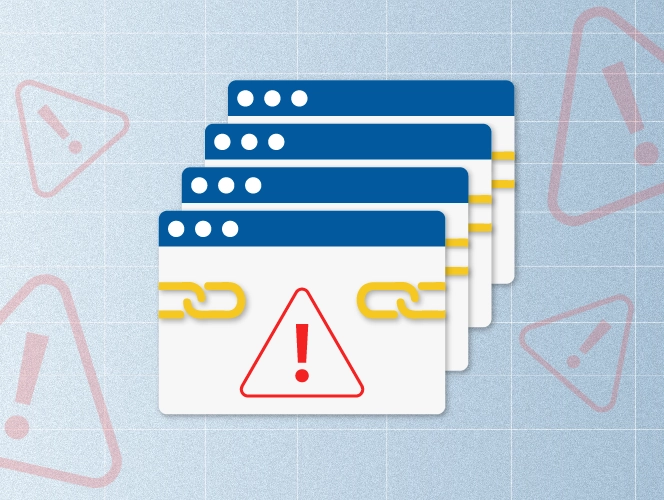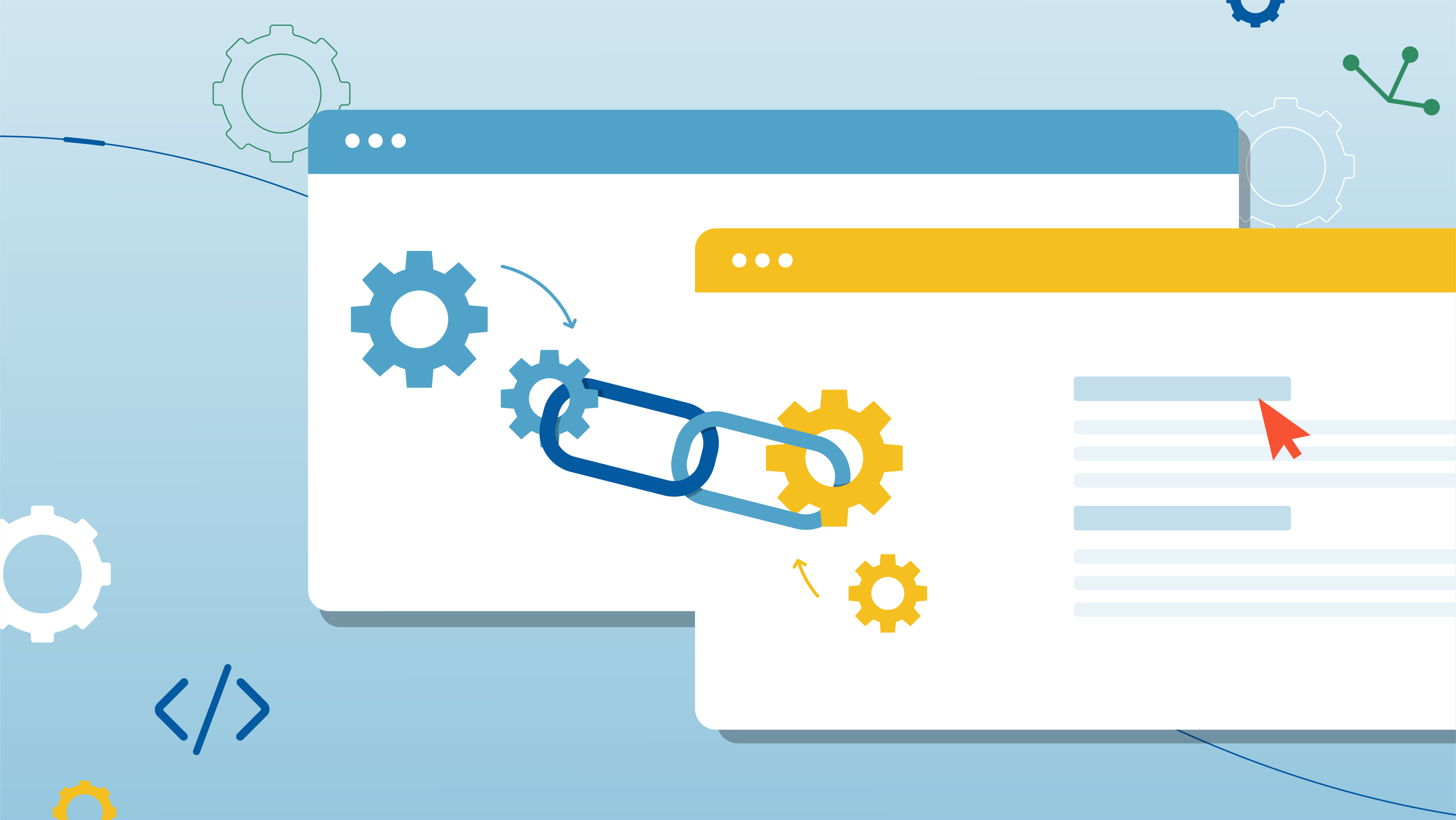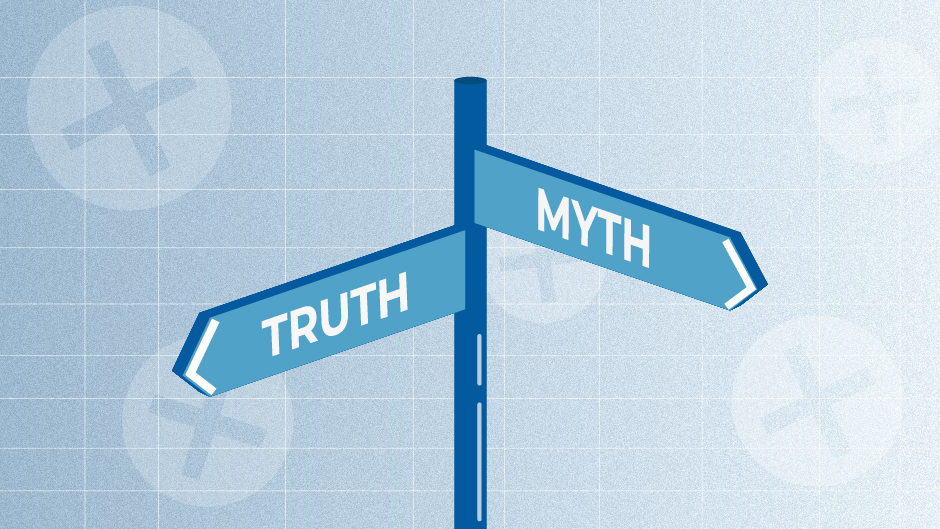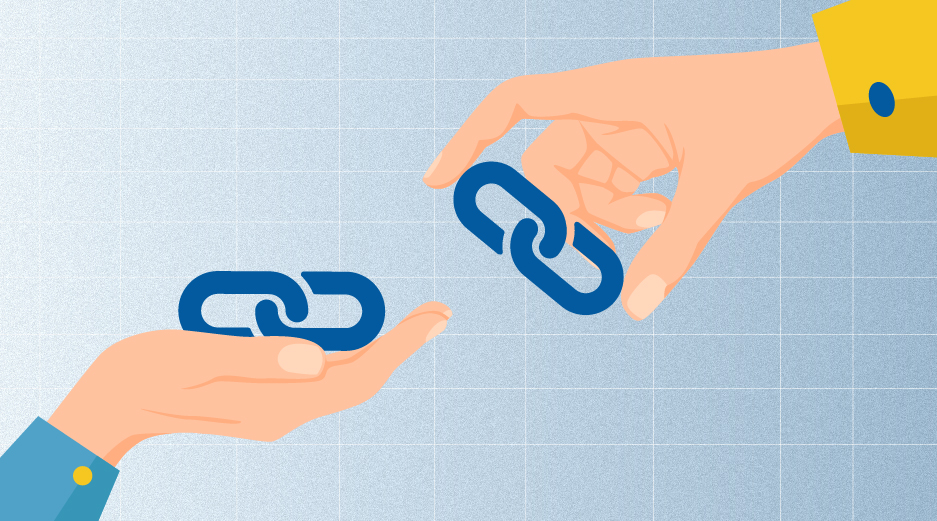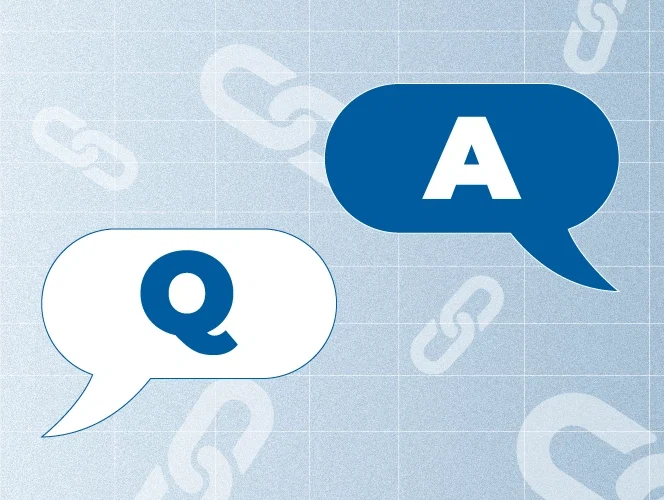Link building can do wonders, but a lot of businesses end up making some simple mistakes along the way.
It’s easy to slip up, especially if you’re just starting out with SEO. But why risk these mistakes when you can simply avoid them?
In this blog, we’re sharing the most frequent pitfalls in link building you need to watch out for and some insider tips from our team on link exchange mistakes you should know about.
Let’s start!
8 Link Building Mistakes That Can Hurt Your SEO
No strategy is flawless, and link building is no exception. To help you stay on track, here’s a list of common mistakes to avoid and keep your rankings safe. If you come across any unclear SEO terms while reading, feel free to consult our SEO glossary for definitions.
Building Backlinks Only for Service Pages
This is one of the most common mistakes we see, and it can really hold you back.
Many businesses put all their focus on getting backlinks for landing pages, mainly to promote their products or services. But they forget about other valuable pages like their blog.
Over time, this can raise some red flags for search engines. Only having promotional links can look a bit suspicious to Google, and you might even face a penalty.
If you want to improve your rankings, we recommend building backlinks for both your service pages and your blog. It’s key to a healthy strategy.
Relying Only On Link Selling Websites
Another big mistake is trusting backlinks from link selling websites.
But why do businesses choose this route? It’s appealing because these sites often have high metrics, making them look like a good option.
But, the problem is, that those metrics can drop overnight. These sites aren’t legitimate businesses—they’re not focused on creating compelling content or maintaining their site. In short, you can end up getting toxic backlinks, which actually hurt your SEO.You might be wondering, what is a toxic backlink? It’s a link from a low-quality or spammy site that can negatively impact your rankings and online reputation.
Besides, selling links violates Google’s guidelines, and such sites face harsh consequences, such as lower rankings, and even a complete removal from search engines.
So what’s the better option? The answer is simple: SaaS link building. By getting backlinks from legitimate SaaS businesses, you’re investing in quality. As these businesses grow, your backlinks get stronger too.
Still not convinced? Take a look at our link building case studies to see how SaaS backlinks have helped our clients improve their rankings and traffic.
Not Building Backlinks Consistently
A lot of businesses think that once they build a certain number of backlinks, their SEO is set and they can just sit back and watch their rankings improve.
But that’s not how it works.
SEO—especially link building—is all about consistency. Building a few backlinks and then calling it quits won’t get you very far. In fact, it’s more likely to lead to a drop in rankings, traffic, and overall performance.
Here’s what we recommend: start by aiming for at least ten backlinks a month to see some positive changes.
Of course, some sites may need more to stay ahead of the competition. It all depends on your website’s content, technical performance, and brand reputation.
But one thing is for sure—if you want better SEO, consistent backlink building is key. If staying on top of this feels challenging, consider hiring a link building consultant to ensure a strategic approach.
Striving for Perfect Backlinks
When businesses start link building, it’s easy to get caught up in the idea of perfection.
But here’s the thing: perfection doesn’t exist and expecting to get flawless backlinks is a bit of an unrealistic dream.
Let’s assume you have got a few “perfect” backlinks from legit businesses with high DR. But have you asked yourself how many of those perfect backlinks you can consistently get over time?
In the beginning, it’s easier to build such backlinks. But eventually, it gets harder to keep up that pace.
Our advice? Keep a balance—have a mix of good backlinks and some that are more average. This sustainable approach will help keep your SEO strong over time.
Building More Backlinks Than Your Competitors
This is one of those link building myths that keeps people confused—thinking you need more backlinks than your competitors to outrank them.
Here’s why it’s a mistake: just because your competitor has 1,000 backlinks doesn’t mean they have an advantage. Many of those backlinks could come from spammy sources, which actually hurt their SEO, not help it.
On the other hand, you could have 500 good backlinks, and quality is what really matters in this case.
Don’t chase numbers. Instead, we recommend looking at your competitors’ backlink profiles to understand what types of backlinks they’re getting.
Not Checking New Organic Backlinks
When your website and content are good enough, you start getting organic backlinks, the ones you get without putting much effort into, such as link exchanges.
This is awesome, especially when these links come from good, trustworthy sources. But sometimes, you might get backlinks from not-so-great domains. That’s why it’s important to not just monitor the backlinks you build, but also the organic ones that come in on their own.
These could be links from comment sections or random directories, and those can actually hurt your SEO.
So, make it a habit to regularly check your backlink profile using Ahrefs.
Simply enter your domain into Site Explorer and go to the “Backlinks” section.
From there, you can filter your backlinks by “Dofollow,” Domain Rating (DR), and traffic, just like in the video screenshot below.
You can also double-check all the pages where you have backlinks to make sure everything looks good since high metrics sometimes can be misleading.
The sooner you identify any harmful links, the faster you can take necessary measures to protect your SEO.
Rushing to Disavow Backlinks
As we’ve mentioned before, keeping an eye on your backlinks is important to find any harmful or toxic ones. If you find them, it’s important to get rid of them.
Now, a lot of people immediately think about disavowing those links, assuming it’s the quickest fix. But here’s the thing: disavowing is actually the least preferred option.
We always recommend using the disavow tool as a last option—and we mean last.
It’s not just us saying this—Google also warns that disavowing backlinks can have negative consequences.
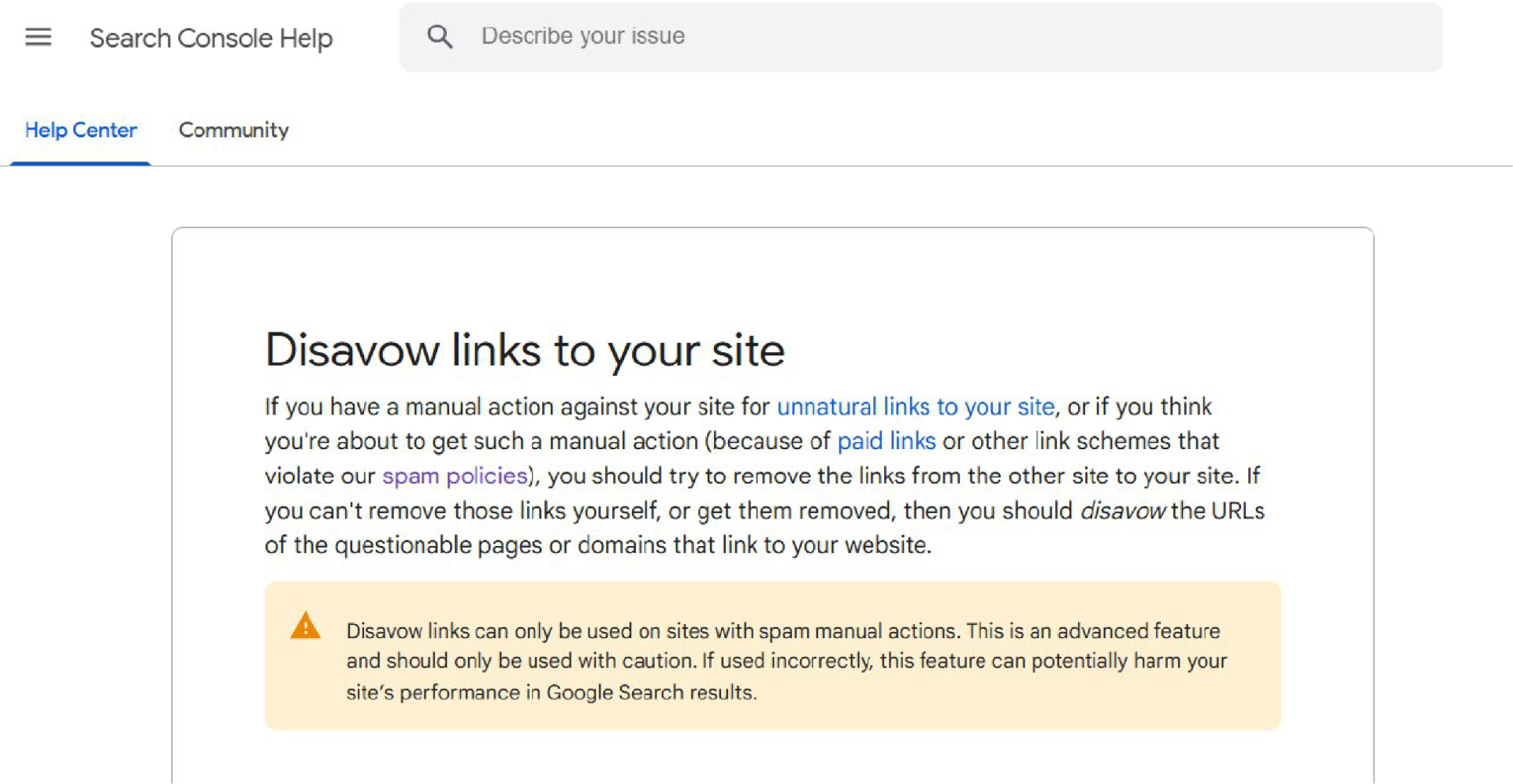
What we recommend is to first contact the website admin and ask them to remove your backlink. This is the easiest and safest way to get rid of harmful backlinks.
Again. Only disavow when it’s absolutely necessary.
Focusing Only On Website Metrics
We’re not saying you should ignore link building metrics completely—they definitely matter.
What we say is that you shouldn’t rely on them fully, because they don’t tell the whole story.
For instance, you might avoid getting a backlink from a legitimate SaaS website just because it has a high spam score. You may think that if you have a backlink from there, your own spam score will go up—but that’s a myth.
On the flip side, some link selling websites might have great metrics, like a high DR or traffic, but those metrics can drop just as easily as they increase. Why? Because Google can easily detect the spammy techniques these sites use to manipulate rankings. They’ll eventually end up being penalized in the long run.
So, our advice is to track these metrics, but also consider whether the website is reputable and a good fit for your link building strategy.
Further reading:
9 Link Exchange Mistakes to Avoid: Insights from Our Team
We wanted to go the extra mile and include some common mistakes link builders often make when building backlinks.
Here are the key “don’ts” shared by our team.
Sending Sloppy or Unclear Link Requests
This is one of the most asked link building questions—how to communicate your requests in a way that’s clear and efficient.
Link building isn’t just about the technical side—it’s also about communication. The clearer you are, the faster those link exchanges can happen. Whether you use LinkedIn for link building or email, being concise and genuine helps you build trust, stand out, and get results.
However, sending messy or unclear emails can seriously slow down your progress. It can also affect your deliverability, and if you’re wondering how to decrease bounce rate, you need to pay attention to the quality and clarity of your emails.
Here’s a what a link request might look like when it’s not well-thought-out:
A link partner shares a request using a screenshot to show where they want their link inserted. Not only does this add unnecessary confusion, but it can also be hard for a link exchange partner to understand exactly what’s being asked.

Now, compare that with the format used by our link builders:
We clearly outline where we want the link to be placed, which anchor text to use, and include all the necessary details. It’s simple and easy to follow.
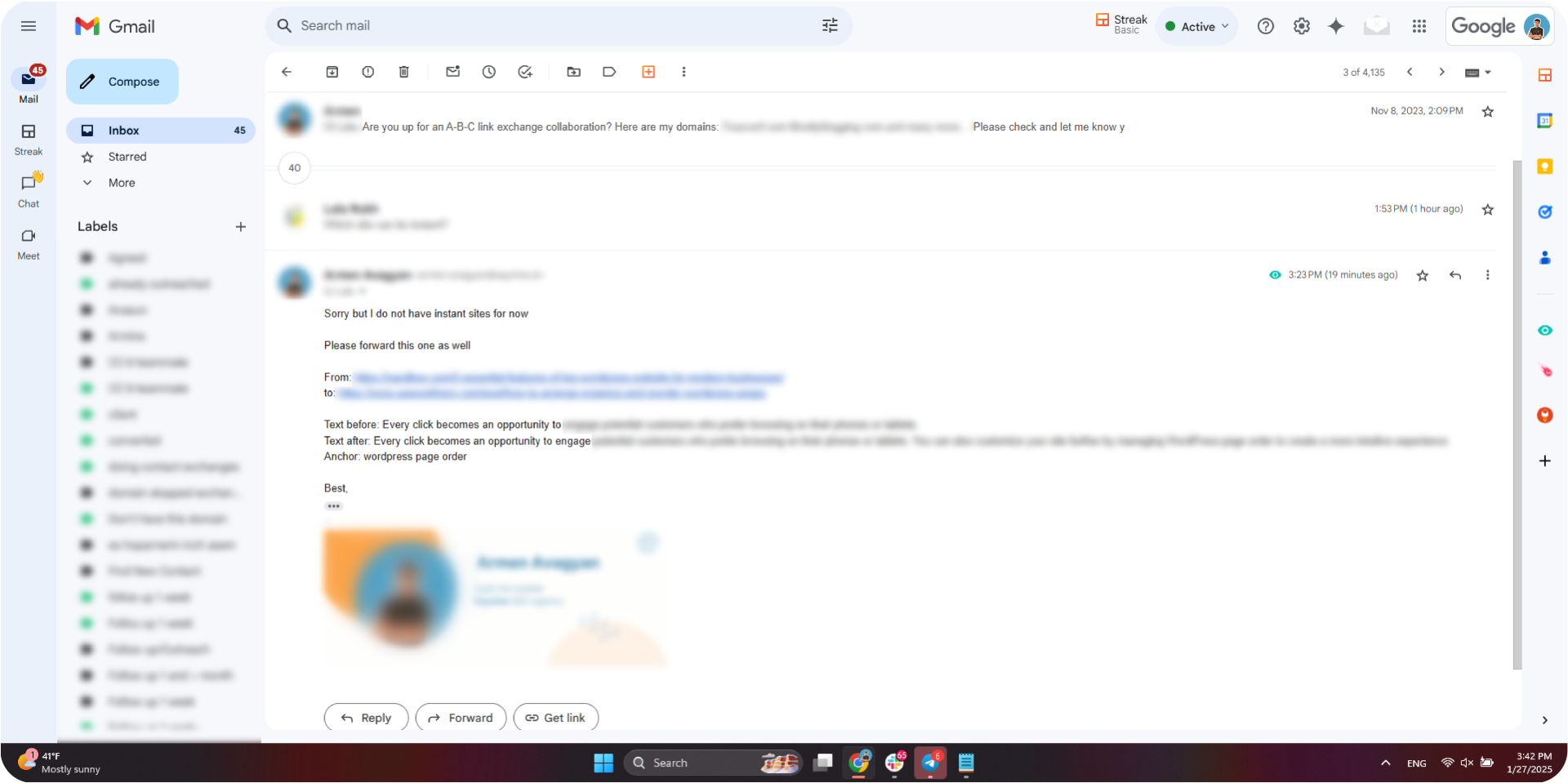
It might seem like a small thing, but trust us—it makes a big difference.
If your emails are sloppy, you can push link building partners away, as it shows a lack of professionalism.
Ignoring Link Partner’s Guidelines
Another common mistake in link exchanges is not following your partner’s guidelines.
Ignoring their requirements can lead to confusion, delays, and unnecessary back-and-forth, as you’ll likely have to send another request to fix the problem.
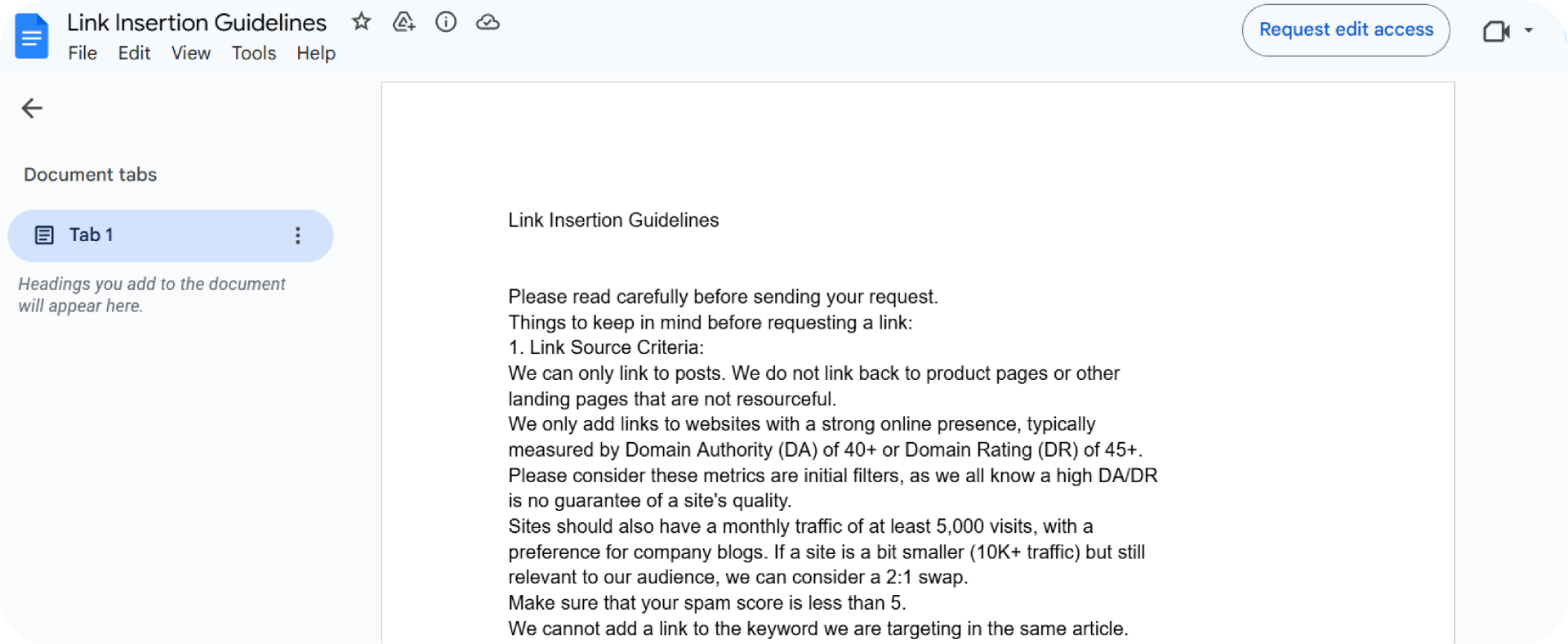
To avoid this, we advise you to always double-check the guidelines before hitting send. It shows respect for both your time and your partner’s, and helps keep everything running smoothly.
Following Up Too Much in One Day
Imagine getting bombarded with follow-up emails in a single day—frustrating, right?
Well, the same goes for your link partners. They’re working on getting your links live, so spamming their inbox with follow-ups won’t help and speed up the process.
Our link builders recommend following up every 3-4 days. It’s not a set rule but that’s what works for us.
Only increase the follow-ups if you have a tight deadline and really need that backlink, but again, don’t annoy people, as they have deadlines too.
Not Keeping Track of Your Link Requests
Whether it’s link building or any other job, keeping everything organized is a must to succeed.
One way to keep your link building collaboration effective is to use spreadsheets.
This way, you can easily understand how many backlinks you owe to your link partners, and vice versa, as well as the status of your link exchange.
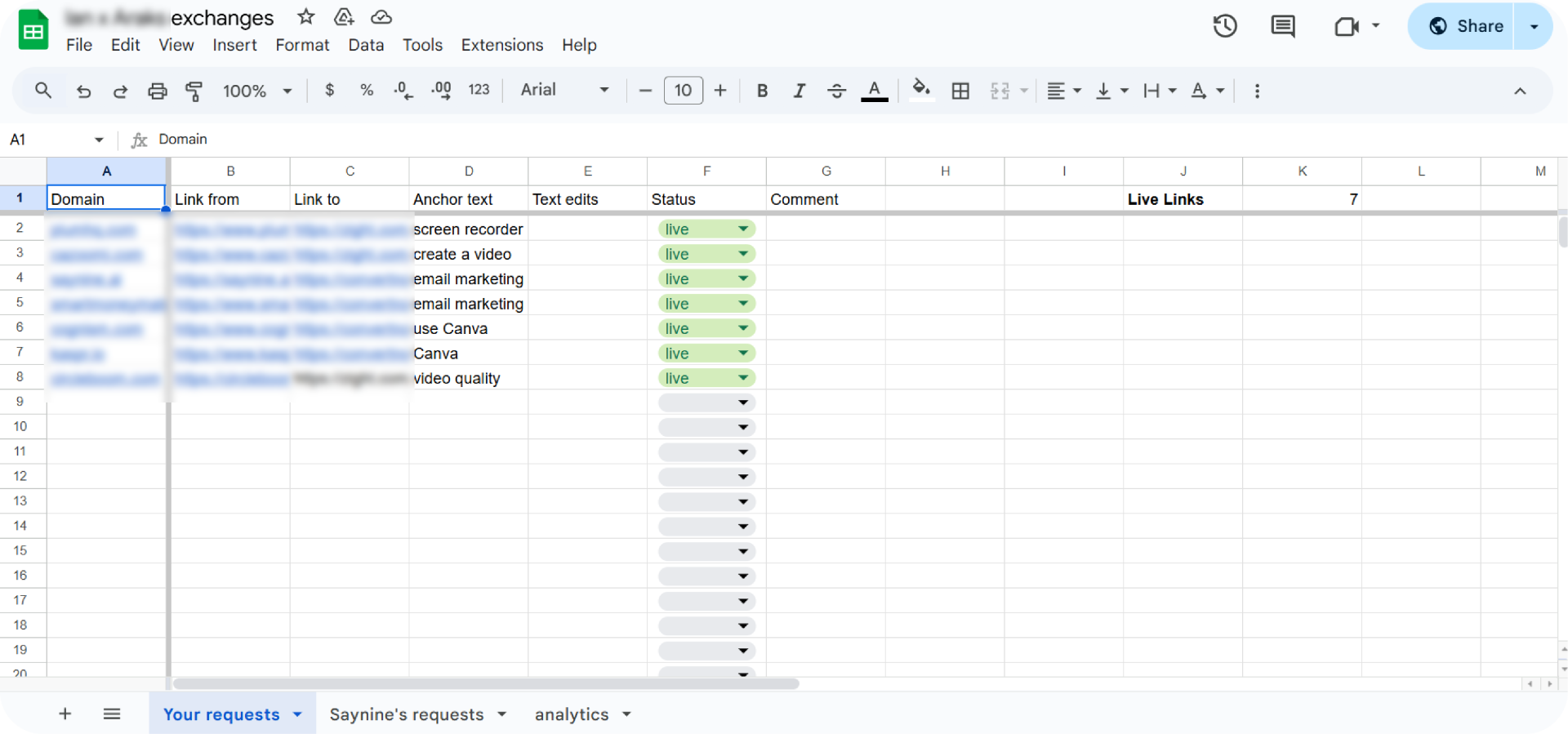
Learning how to use Google Sheets for SEO can help you manage your link requests and stay organized. Creating a basic spreadsheet with each partner can make a big difference and ensure everything is on the right track.
Skipping Personalization in Your Messages
We’ve all received emails starting with “Hi Dear,” “Hey bro,” or something like that, right? Most of us probably ignore them because they feel like mass messages, and let’s be honest, we’re all tired of them.
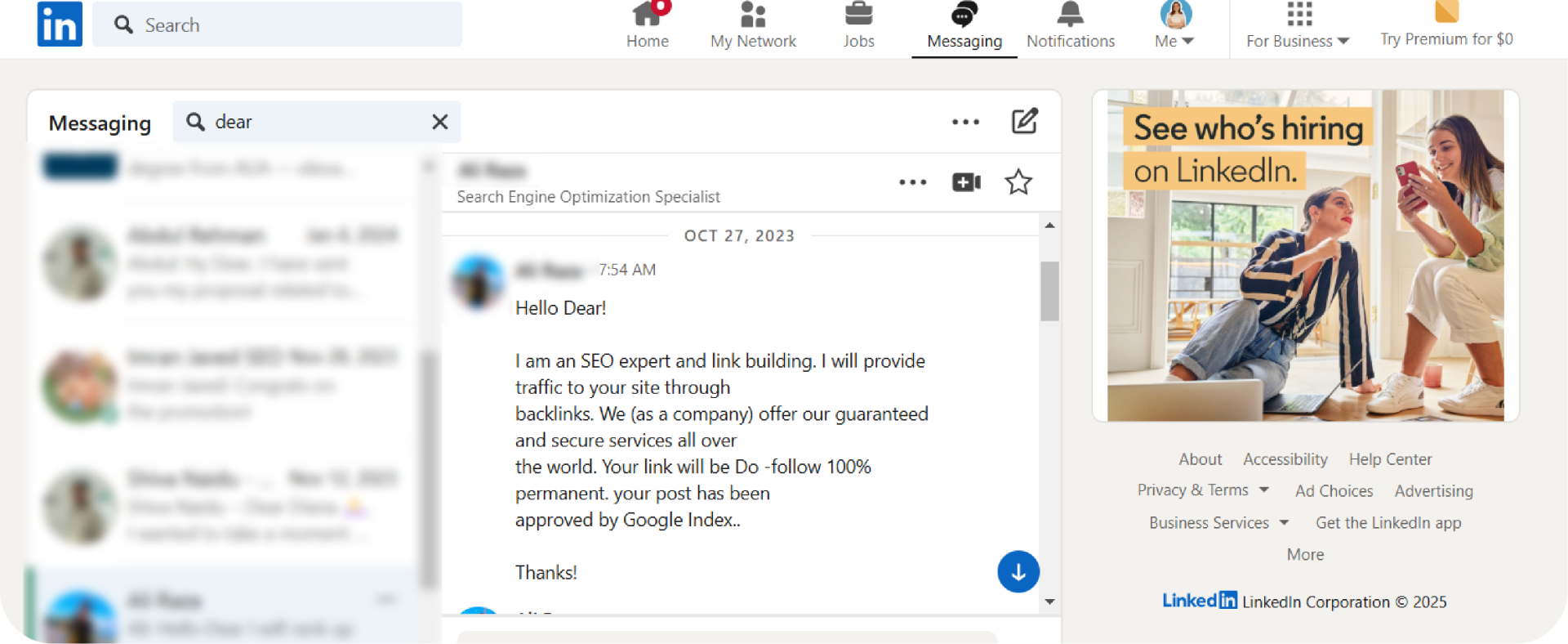
Personalizing your messages, on the other hand, can make a huge difference. When you address someone by name, you add a personal touch and, thanks to this, you are more likely to get a response.
It’s a simple move, but using the person’s name in your message can set the right tone and show that you truly care.
Writing Lengthy Outreach Emails
There is nothing more annoying than getting lengthy messages.
Let’s face it. No one likes to read long messages, and sending them via email is the worst decision you can make when doing a link building outreach.
People’s inboxes are flooded with a bunch of emails, and if yours does not stand out, don’t expect your emails to be opened and read.
What’s worked for us is keeping messages short and getting to the point immediately.
If you are reaching out to someone for a link exchange, make sure to clearly state why you are writing and what you are ready to give in return. A link building Chrome extension can help refine your email content, ensuring clarity and engagement.
Try this method and thank us later!
Further reading:
Making It All About You Instead of Creating Mutual Value
Link building is not only about building backlinks. It’s also about building relationships. And the stronger your relationship with your partners is the more successful your link building campaign will be.
But here’s something a lot of beginners miss—while they’re focused on building backlinks, they sometimes forget to create mutual value.
When exchanging links, don’t forget about your partner. Once you get your link, make sure you follow through and help them with their request too. After all, they have deadlines and goals just like you do.
And here’s something we can all be guilty of: jumping to conclusions. If your link isn’t live yet, don’t assume your partner’s procrastinating or ignoring. Life happens! Maybe they’re dealing with something unexpected. So, check in with your partners, be patient, and show a little empathy.
These simple steps can help you establish link building partnerships that make the whole link building process enjoyable and more rewarding!
Wrapping Up
We all make mistakes, and that’s how we learn.
But when it comes to link building, some errors can be costly, both in terms of money and time.
After learning from our own challenges, we wanted to pass along these insights so you can avoid the common pitfalls and focus on what really works.
Thanks for reading, and good luck with your campaigns!
FAQ about link building mistakes
What are the risks of link building?
Spammy or toxic backlinks gained through black-hat link building tactics can lead to Google penalties and potentially causing your site to disappear from search results entirely.
Is link building illegal?
No. Link building isn’t illegal, however, you should avoid black-hat tactics to avoid penalties from Google.
Which backlinks should be avoided?
We recommend avoiding PBN, paid, comment section, forum, and directory backlinks.

Quiz Time
Let's put your knowledge to the test.
Leave your email below to get a SayNine certificate!
Are you sure?

